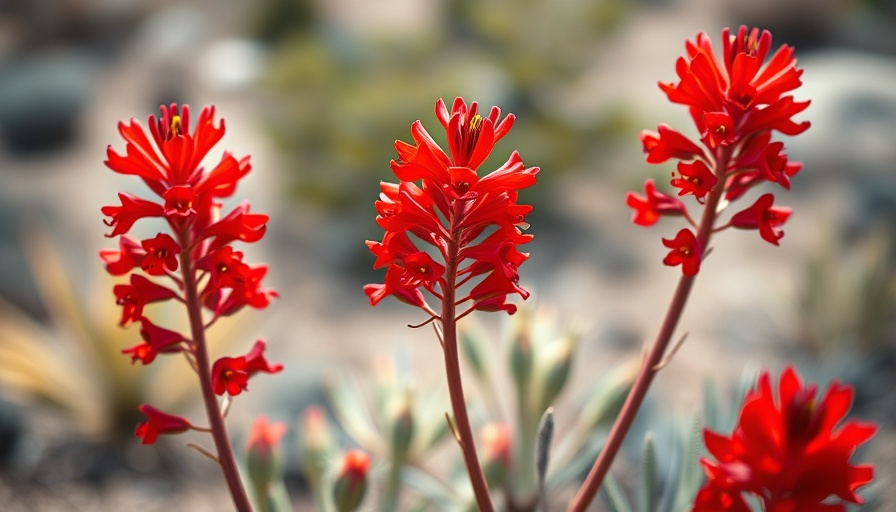
The Beauty and Challenge of Indian Paintbrush Flowers
Indian paintbrush (Castilleja spp.) is not only one of the most vibrant wildflowers native to North America but also a unique addition to any garden. Known for their eye-catching red blossoms and ability to thrive in various habitats, these flowers are a favorite among many gardeners. However, their semi-parasitic nature presents challenges and opportunities for those looking to add this stunning species to their landscapes.
What Makes Indian Paintbrush Unique?
As a member of the Orobanchaceae family, Indian paintbrush is classified as a hemiparasite. This means that while they can survive independently, they flourish best when they share their soil with certain host plants, usually grasses or other native flora. This symbiotic relationship helps the paintbrush gain access to water and nutrients, making understanding its ecological needs crucial for successful cultivation.
Ideal Growing Conditions for Indian Paintbrush
To successfully grow Indian paintbrush, you’ll want to mimic its natural environment as closely as possible. The plant prefers well-draining soil that ranges from sandy to moist, with a slightly acidic pH between 5.0 to 8.0. Depending on the specific species, it is essential to consider the plant's hardiness zone and the amount of sunlight it requires—most thrive in full to partial sun. Providing these conditions can significantly enhance your chances of a successful bloom cycle from spring to fall.
Choosing the Right Species for Your Garden
With over 216 species of Castilleja, selecting the right type of Indian paintbrush for your garden is key to its growth. For instance, some species are better adapted to dry deserts, while others do well in wet meadows. The height and color of the blooms can also vary significantly, ranging from purple to yellow, alongside the iconic red blooms. Ensure you choose a variety that is native to your area to promote local biodiversity and achieve the best growth.
Propagation Techniques to Get You Started
Propagating Indian paintbrush can be a rewarding process. While seeds can be sown directly into the soil, it's beneficial to start them indoors and transplant them later. Planting in the fall or early spring gives them the best chance of survival. When replanting, ensure that you include potential host plants in the same area to ensure the paintbrush has access to resources it needs.
Essential Care and Maintenance
While Indian paintbrush is relatively hardy, it can still be affected by pests and diseases. Monitoring your plants closely can prevent issues from spreading. Planting alongside pest-resistant plants and utilizing organic practices is vital. Consider natural pest deterrents like neem oil to protect your flowers and maintain a healthy garden ecosystem.
Creating a Pollinator-Friendly Environment
By introducing Indian paintbrush into your garden, you are contributing to the ecosystem by providing valuable nectar for pollinators such as bees and butterflies. To maximize this benefit, create a diverse plant community that attracts various pollinators. Including a mix of flowering plants will ensure that your garden becomes a haven for these essential creatures.
Final Thoughts on Growing Indian Paintbrush
As you embark on the journey to cultivate Indian paintbrush flowers, remember that patience, observation, and learning from your experiences are key ingredients in any successful gardening endeavor. Embrace the challenges that come with this striking wildflower, and you may find not only stunning blooms but a deeper connection to the beauty of your local landscape.
Interested in expanding your green thumb? Explore the art of DIY gardening projects or delve into more climate-friendly gardening hacks to maximize your outdoor space!
 Add Row
Add Row  Add
Add 




 Add Row
Add Row  Add
Add 

Write A Comment